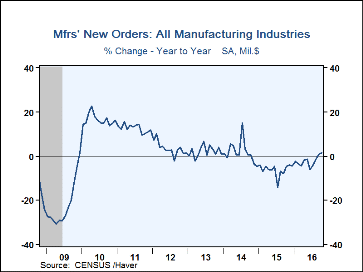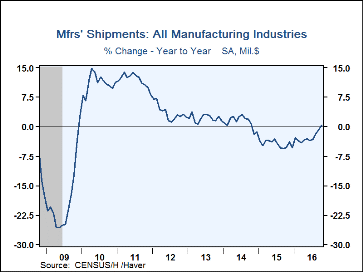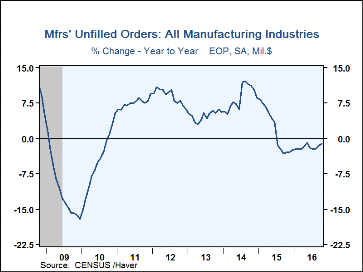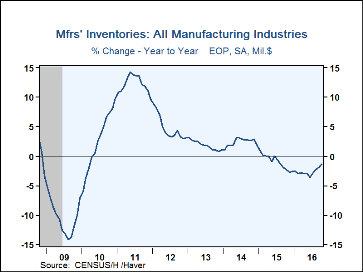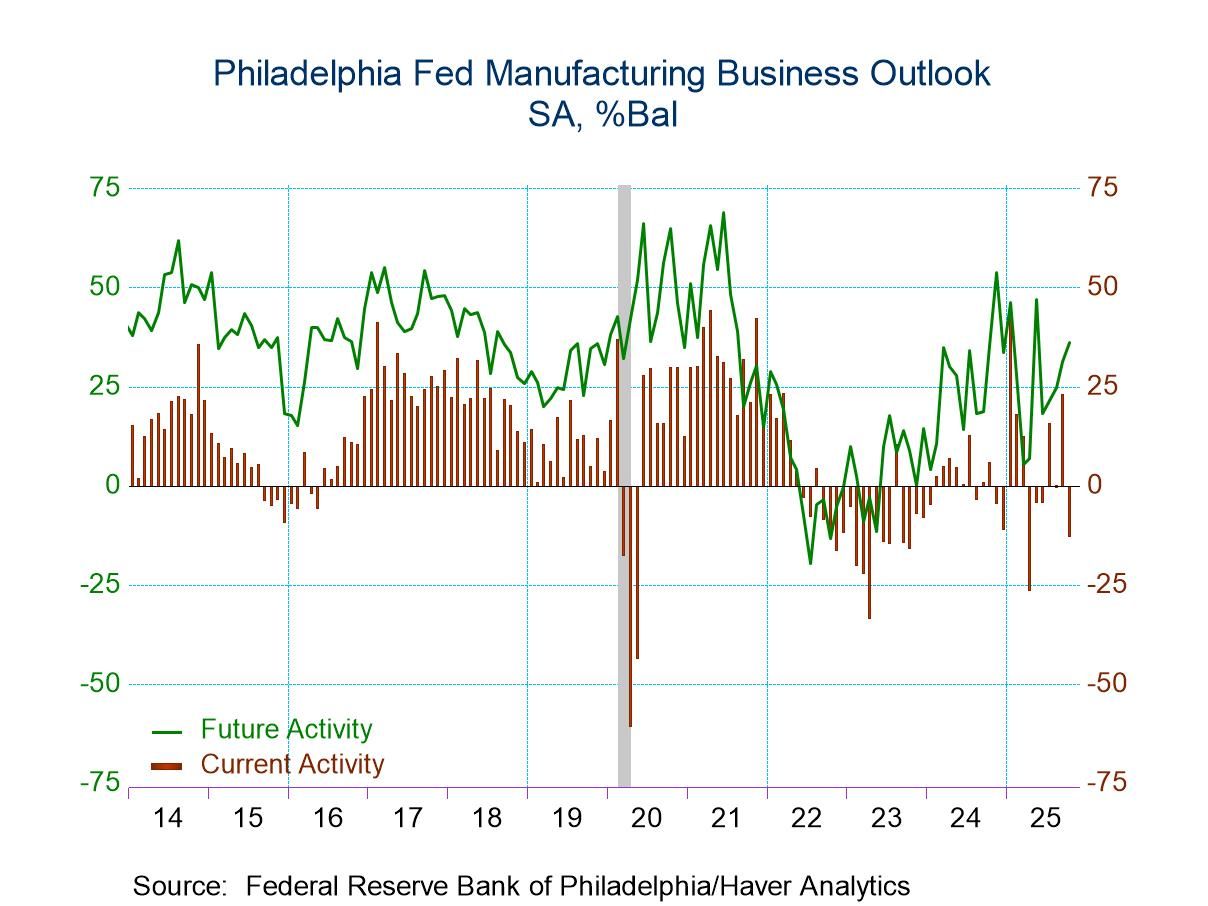 Global| Dec 06 2016
Global| Dec 06 2016U.S. Factory Orders Surge as Aircraft Soars
by:Tom Moeller
|in:Economy in Brief
Summary
Manufacturing sector orders jumped 2.7% during October (1.3% y/y) following a 0.6% September gain, revised from 0.3%. Durable goods bookings increased 4.6% (1.8% y/y), revised from the advance estimate of a 4.8% rise. Transportation [...]
Manufacturing sector orders jumped 2.7% during October (1.3% y/y) following a 0.6% September gain, revised from 0.3%. Durable goods bookings increased 4.6% (1.8% y/y), revised from the advance estimate of a 4.8% rise. Transportation orders increased 12.0% (5.1% y/y) as orders for nondefense aircraft & parts nearly doubled m/m (26.3% y/y). Orders outside of the transportation sector increased 0.8% (0.5% y/y). Electrical equipment, appliance & component orders increased 1.6% (0.3% y/y), but machinery orders remained steady (-5.5% y/y). Orders for nondurable goods, which equal shipments, improved 0.9% (0.8% y/y), the same as in September. Petroleum refinery shipments jumped 6.2% (0.2% y/y) with higher prices. Textile product shipments increased 1.2% (-1.8% y/y), but apparel shipments eased 0.4% (+3.4% y/y). Basic chemical shipments also were off 0.1% (+1.3% y/y). Shipments of durable goods eased 0.1% and were unchanged y/y. Machinery shipments were steady (-4.7% y/y), and computer & electronic product shipments increased 1.1% (4.0% y/y).
Unfilled orders increased 0.7% (-1.1% y/y) after three straight months of 0.2% decline. Outside of transportation, order backlogs improved 0.2% (0.7% y/y). Unfilled orders for electrical equipment & appliances rose 0.5% (7.2% y/y) while furniture backlogs rose 0.6% (6.3% y/). Unfilled orders for machinery declined 0.2% (-6.7% y/y) for the third straight month.
Inventories of manufactured products remained unchanged (-1.4% y/y) following a 0.1% easing. Outside of transportation, inventories also were unchanged (-1.6% y/y). Durable goods inventories held steady (-1.2% y/y) as machinery inventories declined 0.5% (-2.6% y/y), but transportation equipment inventories rose 0.2% (-0.7% y/y). Nondurable goods inventories rose 0.1% (-1.8% y/y). Apparel inventories gained 0.5% (3.0% y/y) and basic chemical inventories rose 0.4% (0.6% y/y). Food product inventories declined 0.7% (-0.5% y/y).
The factory sector figures are available in Haver's USECON database.
| Factory Sector- NAICS Classification (%) | Oct | Sep | Aug | Oct Y/Y | 2015 | 2014 | 2013 |
|---|---|---|---|---|---|---|---|
| New Orders | 2.7 | 0.6 | 0.4 | 1.3 | -6.3 | 1.8 | 2.0 |
| Shipments | 0.4 | 0.9 | 0.2 | 0.4 | -4.4 | 1.2 | 2.0 |
| Unfilled Orders | 0.7 | -0.2 | -0.2 | -1.1 | -2.4 | 8.8 | 5.8 |
| Inventories | 0.0 | -0.1 | 0.1 | -1.4 | -2.5 | 1.8 | 0.9 |
Tom Moeller
AuthorMore in Author Profile »Prior to joining Haver Analytics in 2000, Mr. Moeller worked as the Economist at Chancellor Capital Management from 1985 to 1999. There, he developed comprehensive economic forecasts and interpreted economic data for equity and fixed income portfolio managers. Also at Chancellor, Mr. Moeller worked as an equity analyst and was responsible for researching and rating companies in the economically sensitive automobile and housing industries for investment in Chancellor’s equity portfolio. Prior to joining Chancellor, Mr. Moeller was an Economist at Citibank from 1979 to 1984. He also analyzed pricing behavior in the metals industry for the Council on Wage and Price Stability in Washington, D.C. In 1999, Mr. Moeller received the award for most accurate forecast from the Forecasters' Club of New York. From 1990 to 1992 he was President of the New York Association for Business Economists. Mr. Moeller earned an M.B.A. in Finance from Fordham University, where he graduated in 1987. He holds a Bachelor of Arts in Economics from George Washington University.


